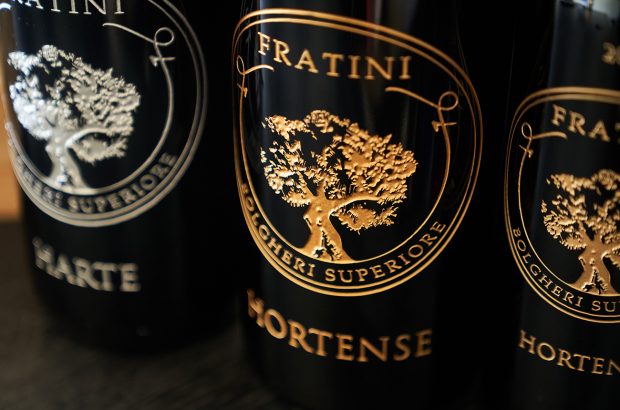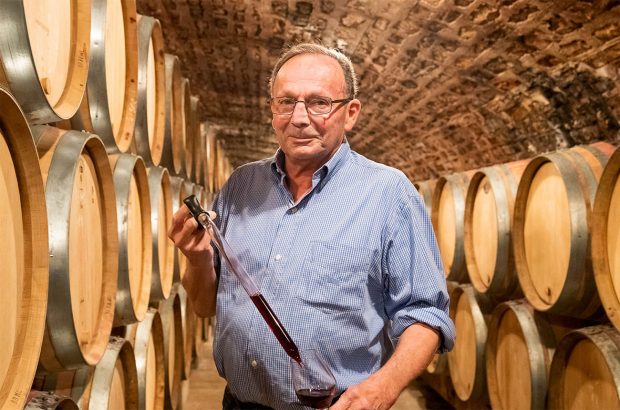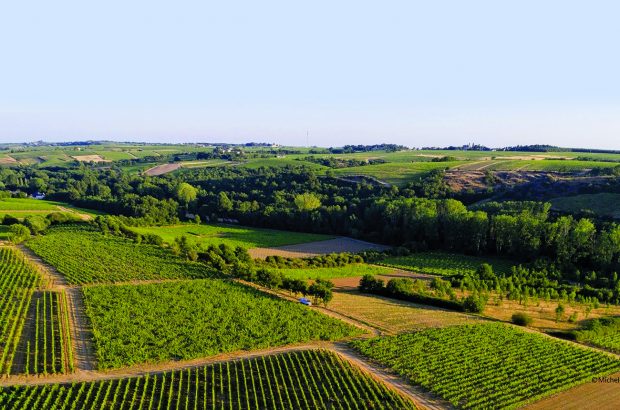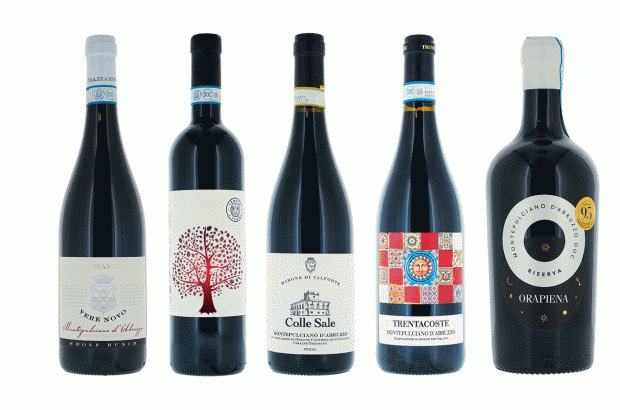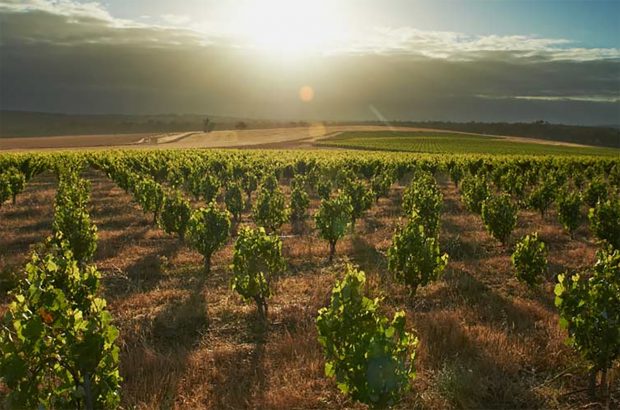Despite the controversy over whether 2000 or 2001 was the beginning of the new millennium, it seems generally agreed that the relevant celebrations occurred on December 31st, 1999. Wine producers will naturally be tempted to launch special bottles of wine harvested in 2000, marketing this as the first vintage of the 21st century. Sometimes the hype will be justified, but many wines are likely to prove an expensive disappointment. One claim is certain: this is the best vintage of the 21st century – so far.
France
Bordeaux
The 2000 vintage is being hailed by many as a great one, and comparisons are being made with the vintages of 1982 and 1990. ‘This year’s wines show a complexity rarely achieved. There is great tannic power, yet the tannins remain supple and silky,’ says Pascal Ribereau-Gayon, winemaker at Calon-Ségur in Saint-Estèphe. I would compare these wines to the 1990s; in fact, I would say a super-90.’ Flowering started in late May. As it often is, August was crucial, as much of July was cool and wet, with mildew a problem. Luckily, August was dry and sunny, banishing the mildew. Very little rain fell between July 22nd and September 22nd. By the time the weather broke on October 16th, most of the harvest was finished. After two years of some moderation, prices for 2000 en primeur Bordeaux are likely to rise significantly, accompanied by a blizzard of hype. The 2000 may well be very good, but it is worth remembering that the weather in 2000 was certainly not on a par with 1989 or 1990, for instance.
Sauternes
There will be some good sweet wines this year, but the quantity is likely to be small because of the rain in mid-October. The best wines will come from those grapes picked before the arrival of that month’s persistent rain.
Burgundy
Reports from Burgundy are favourable, although there were storms on September 13th and 14th. Apart from these blips, September was sunny. The harvest was early, with Pinot Noir being picked on the Côte de Beaune from September 10th and on the Côte de Nuits a couple of days later. This year Chardonnay ripened later than the Pinot. The harvest was finished by the end of September. If the producer had controlled the vines’ vigour, the grapes ripened evenly. Whites are reported to be very promising, while reds are more uneven, with much depending upon the yields.
Beaujolais
It was a very early harvest in Beaujolais – picking started on August 28th. It was mild throughout the year, with a warm and sunny spring. Only July was cool. The warm, dry weather held through the harvest. The vintage is reported to be exceptional, with deep-coloured wines.
Alsace
Spring was warm and sunny. Budburst started around April 20th and flowering was early and speedy at the beginning of June. The weather in July and August was more variable – cooler, with some rain. This produced some rot and slowed maturity. The sun returned in September. The harvest for Crémant d’Alsace began on September 11th and on the 21st for the still wines. Volume is estimated to be around 1,250,000 hectolitres, which is similar to 1999.
Champagne
The Champenois are quite pleased with the quality of this year’s harvest, although severe hailstorms in July destroyed large tracts of vineyard in the Marne Valley and the Montagne de Reims. However, a dry, warm period in September – just before picking – greatly improved the quality potential. The date for the start of picking was September 18th, but the harvest began about five days earlier in the southernmost Côtes de Bar. The quality in southern Champagne was high, whereas it was more problematic in the Marne because of the earlier storms. The harvest was drawn out – picking did not finish until early October. Overall 2000 vintage is an abundant crop.
The Loire
Perhaps years now go in the threes in the Loire. Three good to very good years – 1995, 1996, 1997 – have been followed by three difficult years. A cool April this year meant that the vines were slow to start. Flowering, however, was successful in June. July was considerably cooler and wetter, and there was less sun than usual. Indeed it was one of the most dismal Julys since 1945. Mildew was quite widespread. Fortunately the weather and temperatures picked up in August. September was generally dry and warm. This continued until October 7th. Reds have good colour and are likely to be for early drinking. Muscadet and the central vineyards look to have had a good vintage. This is a difficult year for sweet wines, with producers still hoping for a decent spell in November.
The Rhône
The vintage in the southern Rhône started at the end of August, a week earlier than normal. The fruit was very clean, with good ripeness. Indeed the sole concern was that high sugar concentration would produce over-alcoholic wines. As elsewhere in France, July was cool, with temperatures well below average, but a warm, dry August made up for this. Storms around September 20th were followed by the arrival of the Mistral, which dried the remaining grapes. After a dry August in the north, the harvest began on September 6th in St Péray and Crozes-Hermitage and finished on October 9th. There was some rain in September. This was a big harvest. The vintage appears promising, though the southern Rhône may prove superior.
The Midi
Apart from the customary storms around the equinox, this has been a good vintage for the Midi. The most rigorous producers will make some very fine wines. Overall, the quality is reckoned to be somewhere between that of the great 1998 vintage and the easy-drinking, early maturing wines of last year.
Italy
Piedmont and Lombardy
Throughout Italy the harvest started early. The harvest in Piedmont started at the end of August. Success in 2000 hinge upon whether or not producers finished picking before the heavy rains of mid-October set in. Those who finished prior to the deluge should have made some powerful and concentrated reds. Grape picking grapes for the sparkling wines of Franciacorta began on August 18th.
Veneto
Here, June was unusually dry and warm. July was cooler, with more rain than usual, while August was particularly warm. The vines were 15 days ahead of normal. The potential for Amarone and Recioto wines looks good.
Maremma and Carmignano
June and July were very hot and dry. This reduced yields by between 10–15%. The reds should be concentrated, but may be over-alcoholic if the producer miscalculated the time to pick.
Chianti
This has been a dry year, with a cool July but warm August, especially the last two weeks, which led to concerns that the grapes would be over-ripe.
Umbria
As elsewhere, the harvest was very early. Torgiano started on August 21st – one of the earliest ever. The grapes were reported to be very healthy.
Spain
In both Rioja and Navarra, the weather throughout October caused problems. Producers report a ‘brilliant’ summer, with a perfect July and August and fabulous flowering. In the vineyards it was thought that nothing could go wrong – until the rain started. Those producers who failed to do a green harvest are likely to have suffered. The harvest has been very drawn out because of the large volume of grapes. Indeed, some producers in Rioja were still picking in November. Prices of grapes have tumbled.
Portugal
Because of rain in April and May, the flowering was problematic and this vintage will be 40% down on last year, which was a very big harvest. The quantity is estimated to be around 6.12 million hectolitres. Because of the small crop and the dry conditions during harvest, quality should be high. In particular, volumes of Vinho Verde and port will be down. In the Douro the grapes were very healthy and sweet.
England and Wales
A very wet harvest has just finished. Yields are variable. Some areas were hit by adverse conditions during flowering, while others report above-average volumes. Despite the deluge, the grapes were surprisingly healthy, with good flavours and sugar levels. If 2000 does turn out to be a reasonable vintage, it may indicate that climate is not as important as we think it is…Germany Germany has had to contend with a very wet July and October. At the time of writing the harvest was not yet finished, but 2000 is expected to yield an estimated 10.5 million hectolitres – some 25% less than the large 1999 harvest. It is likely there will be a high percentage of Qualitätswein and smaller quantities of fine pradikat wines. There was extensive rot, especially in the early-ripening varietals. However, despite the rain, Oechsle levels were high. Much will depend upon how successfully producers have controlled a potentially large crop. The classic sites will, undoubtedly, have produced vintage Riesling.
Austria
Compared to Austria’s great 1999 vintage, this year’s harvest was picked considerably earlier because of the warmth of the latter part of the summer. Initial indications suggest that, while the white wine would have benefited from a longer period on the vine and may not be as good as last year’s, 2000 will be a good year for red wine in Austria. Sweet wines are expected to be very good. Quantity is down by 10–15%.
Switzerland
Favourable weather conditions throughout the year led to a very early harvest, which began on September 19th. The results are predicted to be extremely good.
Hungary
There are very positive reports from Hungary. The flowering was early and successful. As elsewhere in Eastern Europe, the summer was very hot. In Tokaji the fine weather continued into the autumn, giving a harvest of both very high quality and generous quantity. Claims are being made that this is one of the great vintages, in line with 1919, 1937, 1947 and 1972.
Bulgaria
In common with much of Eastern Europe, Bulgaria had a very hot, dry summer. The grapes ripened two weeks earlier than normal and were very healthy because of the dry conditions. There should be some good, rich, concentrated red wines, especially Cabernet Sauvignon and Merlot. Most of the country’s vineyards have now been returned to private hands, and 2000 should signal the start of a return to properly maintained vineyards.
Romania
The very hot summer has led to a successful harvest, which should also reflect the increased investment that is being made in the Romanian wine industry.
Greece
A very hot, dry summer has resulted in some very good reds. Whites are more problematic: acidity levels are low in Attica, while in Santorini they are fine.
USA
California
The volume of grapes grown in 2000 is estimated to be substantially higher than last year – 3.2 million tonnes (23% higher than 1999). Flowering was very successful. Over the summer there were few days hotter than 37°C, so the growing season has been even. Because of a misty, cold spell around September 15th, the vintage in Napa has been very drawn out, with some producers still waiting to pick their Cabernet Sauvignon in early November. Excellent sugar/acid balance, good colours and flavours are reported across the state.
Oregon
Near-perfect growing conditions have been reported, so there ought to be some very fine Pinot Noir made here this year. The harvest is estimated to be up around 10% on last year.
Washington
The harvest began in early September and a record crop is expected. The prediction is somewhere in the region of 88,500 tonnes, almost 25% up on the 71,000 tonnes harvested in 1998, the previous record. Late summer and early autumn were sunny, with cool nights. The weather turned cooler during the harvest, with some light rain.
Argentina
Once again, as in 1998, Argentina suffered from rain in early March. Fortunately, the rain was nothing like as severe as the storms of two years ago and, furthermore, lessons have been learnt. Luckily the sun returned later in the month. Overall, warm days and cool nights helped to produce interesting flavours and keep acidity levels up. Alcohol levels are lower than usual, and there is a widespread belief that this will produce more interesting and complex wines. It seems likely that 2000 will help Argentina’s producers to build upon their growing reputation.
Uruguay
This year’s crop is being heralded as Uruguay’s best vintage for years. This is due to the favourable weather, teamed with the benefits of increased investment. Stricter quality controls have also been recently introduced.
Chile
This vintage is memorable for being the latest on record. Its start was delayed and picking did not finish until the second half of May. Customarily, the harvest is usually finished by early May, even in late years such as 1996 and 1998. Spring was cool and moist, with the Casablanca valley being hit by a late frost on December 6th. Flowering was very successful, producing unexpectedly high yields. It was these high yields, coupled with the cool spring, that delayed the harvest. The 2000 vintage is bigger than it was in 1999 and is, generally speaking, of better quality.
South Africa
The 1999/2000 season in the western Cape saw severe drought and an extremely hot growing season, compared to the normal weather conditions experienced during the ripening and harvesting period. The drought and high temperatures led to uneven budding and, as a result, the crop was down by some 7% on the previous year. After the second consecutive dry and warm winter, many regions experienced problems with uneven budding. However, the weather during flowering was more favourable, but the high temperatures that followed slowed growth. By contrast, the northern Cape had a very wet December to February, which brought problems of rot.
Australia
This was due to be the vintage that stretched Australia’s tank resources to the full, thanks to an avalanche from the many new plantings now coming into production. The estimate was in the region of 1.3 million tonnes. The vintage, however, was smaller than expected at around 1.14 million tonnes – yhis is only slightly up on the previous year. In certain areas, for example McLaren Vale in South Australia, yields were substantially down due to problems during flowering. In other regions, low yields were caused by residual damage from frost during the 1998/99 season. Overall, yields were down by 11% for red varieties and by 10% for whites. Shiraz was the worst affected, down by 20% on the estimate. However, the low yields have produced some very concentrated reds. The weather during the latter part of March was unseasonably cool and this delayed harvesting, even in traditionally warm areas such as Mildura. Very early reports suggest that the forthcoming 2001 vintage will be very big. This may well have wide repercussions on the price of wine, and may well help to further narrow the gap between sales of French and Australian wine in the UK.
New Zealand
New Zealand started the new millennium with a good harvest. Volume is slightly up on last year. Irregular flowering, especially for Sauvignon Blanc, contributed to a lower harvest than had been originally estimated, as there are a number of new vineyards coming into production. February and March were warm and dry. Temperatures continued warm into April and May, with cool nights that helped to develop flavours and to keep the acid balance. North Island had a record harvest, while in South Island quantities were slightly down on 1998. Hawke’s Bay, for instance, saw an increase of nearly 23%, while Marlborough was down by 10%.







